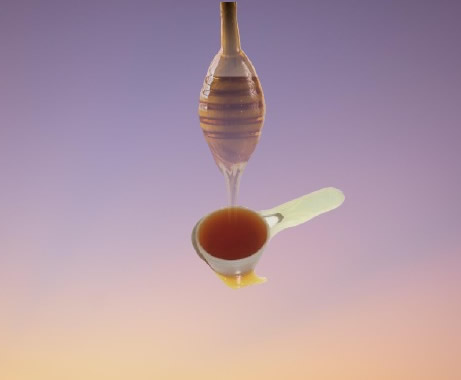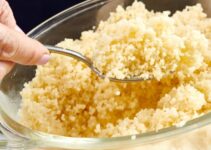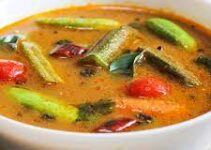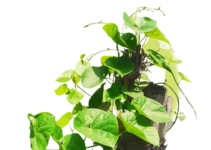11 Surprising health benefits of honey
- Regular use of honey helps increase appetite and solves indigestion problems in kids.
- Mixed with lukewarm water, it diffuses immediately into the bloodstream and helps the brain use more glucose, thus helping overcome fatigue.
- If honey is taken with lime juice, it helps cleanse the bowel, strengthening the digestive system.
- To have relief in hyperacidity, a mix of honey + ghee is given for better results.
- For obesity and weight loss, a glass of warm water +1 tsp of honey should be taken on an empty stomach in the morning. If used regularly, it shows promising results.
- Honey is beneficial in releasing phlegm and acts as an expectorant.
- For sore throat, licking honey is recommended.
- For sore throat, gargling should be done with honey, oil, and salt.
- vitamin B deficiency leads to impaired vision and calf muscle pain; bran bread is given with honey, ghee, and a glass of milk.
- Being a good source of vitamins such as nicotinic acid, Vit-C, B2, etc., it is highly beneficial for eyes related problems like corneal ulcers, retinal haemorrhage, congestion of sclera, etc.
- Hippocrates advocated honey for longevity and used it till his 109th years of life.

How honey is useful
- Honey helps to improve complexion improver within 25-30 days.
- The honey + ghee + rock salt is applied over the insect bite area.
- Honey heals the wound if applied regularly.
- Itching problems can also be minimised by applying honey to the concerned body area.
- For excessive salvation and continuous hiccups, it is good to take the paste of ginger powder + honey.
- For hiccups, honey is also given with lime juice and salt.
- For stomatitis, a salt, water, and honey solution is used for gargling.
- Feeling of vomiting, take the powder of chebulic myrobalan along with honey.
- For constipation, a teaspoon of honey is recommended with 2 tsp of ghee daily.
- Honey also preserves fruits like apples, figs, and Indian gooseberry.
11 Medicinal benefits of honey
- Cleansing wounds with water and honey prevents secondary infections and helps in healing.
- Honey protects the wounded parts from pathogens.
- a mix of honey and ghee is applied to the affected area in acute burns.
- Teeth cavity pain can be reduced by using cotton-soaked honey.
- a few drops of honey can be used as eardrops if a person suffers from earache.
- For conjunctivitis, honey is used as a local application.
- It is highly beneficial for mouth ulcer people. It is applied to the affected parts to get relief.
- Honey + long pepper powder is used in the case of asthmatic patients.
- For Kids suffering from fever, cough and cold, powder of medusa + long pepper + Pistacia integerrima + garden cress is given along with honey.
- Honey can draw water from the wound by osmosis because its higher sugar content helps in wound contraction.
- Being low Ph value, it inhibits bacterial growth.
Honey nutritional facts
• The nutritional composition of honey is
• Water-23%
• Glucose-35%,
• Fructose- 36%,
• Sugar- 3%,
• Minerals-2%
• Vitamin-0.8%
• Protein-2%
Honey, minerals like potassium, calcium, magnesium, iron, manganese, sulfur, chromium, nickel, tin, silver, and gold are abundant. Honey contains vitamins like Vit-B1, B2, B6, C, niacin, nicotinic acid, and pantothenic acid. Phenyl amine, aspartic acid, gluconic acid, leucin, valin and asparginil protein are present.
The best use of honey
Recently collected honey is unripe, hence not of maximum use. Store honey is considered good quality and used in medicine and food. Ideally, one-year-old honey is considered to be the best for use. Honey is used in baking, breakfast-cereal, snack food, confectionaries, salad dressings and sauces, dairy products, etc. It is also used in the beverage industry and as an energy booster for athletes due to its rapid assimilation. It has anti-bacterial and anti-inflammatory effects, so used for various disease purposes.
How honey is prepared?
Honeybees have to do hard work to form one drop of honey. After extracting the love from the flowers, the bees store it in the stomach, which converts sucrose to fructose and glucose with the help of the invertase enzyme. The ripening process of honey starts by lowering the content of water. Thereby honeybees store it in their honeycomb.
What is a honeybee?
There are three types of honeybees-honey collector, supervisor, and queen. The female bee or the queen lays about 2000 eggs every day. Out of these eggs, the queen gets matures in 16 days, and its lifespan is 2-3 years. The lifespan of collector and male bees varies from 2-4 months. The collector bees are the maximum number and sting if needed only once a lifetime. After stinging once, it loses its stinging power. The primary duty of the male honey bees is to make the queen pregnant. After the copulation is over, they die immediately. To gather 3 kilograms of honey, the bees have to visit about 7 50 000 flowers.
How to recognise, identify and test honey?
Honey sinks when added to a glass of water. If dropped on a dry cloth, don’t stain it. When love is mixed with 3-4 parts of alcohol, it forms a turbid mixture showing purity. Boil one part of honey with five amounts of water, cool it, and add some quantity of iodine; the blue discolouration shows its impurity. Colour consistency and good taste are some of the features of good honey. It is hygroscopic to maintain its original weight.
The best quality honey
• Pure honey is yellowish, just like cow’s ghee.
• The taste of honey depends upon the flowers from where nectar is sucked.
• Honey brunts altogether and noiselessly and doesn’t leave any residue.
• When honey is rubbed between two fingers, it becomes more liquid.
• Where pure honey is stored in a bottle, after some time, sugar crystals may be seen at the bottom.
What are the different types of honey?
Types of honey depend upon species of bees and flowers from where it sucks nectars or honey. As per Ayurveda, there are eight types of honey
• Bhramar
• Kshaudra
• Pauttik
• Chhatra
• Aarghya
• Daala
• Auddalaka
• Makshika.
Prevention and Precaution for Honey
• Honey should never be heated and consumed.
• It is better to avoid having honey in the summer season.
• Pitta type of person should avoid honey.
• Honey, overheating, becomes toxic to the body because of the formation of Hetroxy Methyl Furfural.
• Excessive use of honey causes diarrhoea.





Very informative things
Can honey helps in high BP in summer?
Thankful to you for sharing such a pleasant post. Your post is unique. It is strong for every peruser. You may prop up on sharing such a charming post.